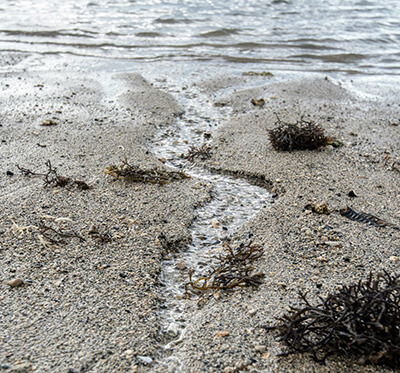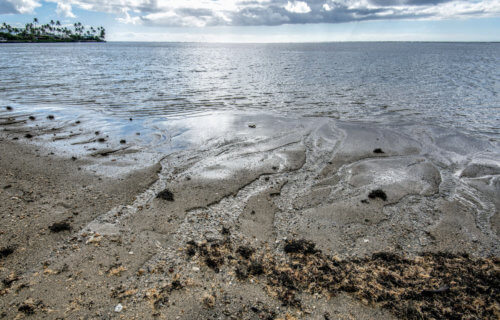SANTA CRUZ, Calif. — Researchers have finally discovered how water flowing deep below the earth’s surface changes the ocean’s chemical makeup. The water that seeps into the ocean along coastlines all over the world, known as groundwater discharge, has a significant impact on the composition of seawater, according to a recent study. This is because when freshwater flows through the cracks and spaces below the earth’s surface it picks up natural elements from weathering rocks.
Previous studies have tended to focus on the far greater volumes of water and dissolved materials entering the sea from rivers and streams. The impact of groundwater has largely been ignored because it is hard to measure — until now.
“It’s really hard to characterize groundwater discharge, so it has been a source of uncertainty in the modeling of global cycles,” says the study’s first author Kimberley Mayfield, of the University of California, Santa Cruz, in a statement. “It took a large effort by researchers around the world who came together to make this happen.”

The researchers measured concentrations and isotope ratios of five key elements in coastal groundwater at 20 sites around the world. These elements, including lithium, magnesium, calcium, strontium, and barium are produced by weathering rocks and transported to the ocean in groundwater.
Weathering rocks play a big role in what’s known as the inorganic carbon cycle by extracting carbon dioxide (CO2) from the atmosphere. “Those elements are important because they come from the weathering of rocks, and weathering of silicate rocks accounts for a huge uptake of carbon dioxide from the atmosphere over long time scales,” says Mayfield.
Combined with recent estimates, the researchers found that groundwater is responsible for around five percent of these elements in the ocean and 16 percent in rivers. “This is the first global assessment of groundwater discharge for most of these elements,” notes study co-author Professor Adina Paytan. “This information is useful for our understanding of how weathering of rock is related to climate, not only in the present but also in the past.”
The researchers also reveal that groundwater contained different isotopes, or slightly different variations of the same elements. This information could help scientists to better understand the world’s climate history and build more accurate carbon and biochemical models.
“The composition of groundwater discharge is very dependent on coastal geology, whereas river water is more influenced by the interiors of continents. It’s important to recognize that groundwater makes a difference globally, and now that we have this large data set, people can keep improving it with more sampling and develop better models of global groundwater discharge,” says Mayfield.
The findings are published in the journal Nature Communications.
SWNS writer Tom Campbell contributed to this report.
